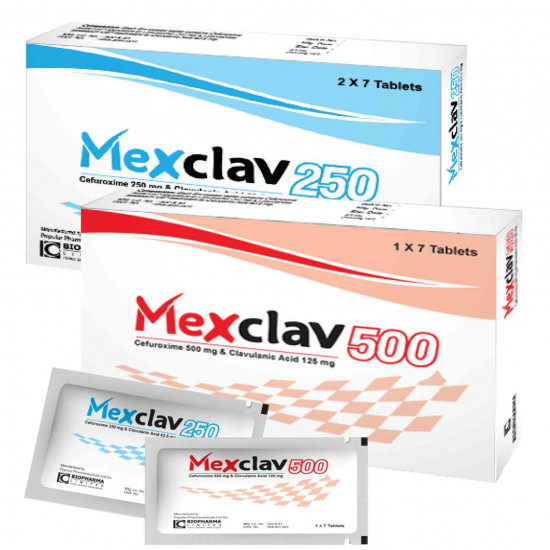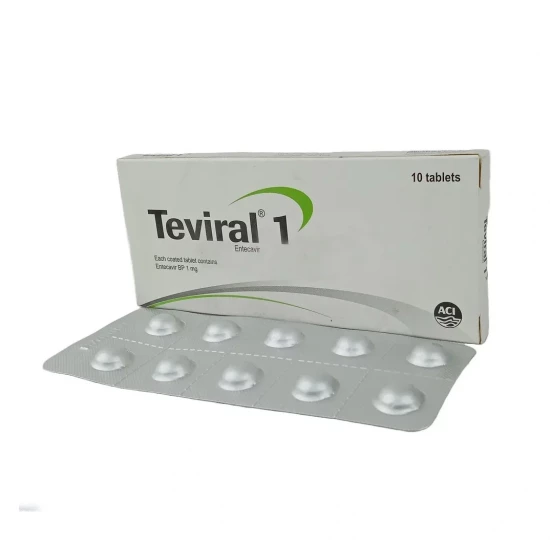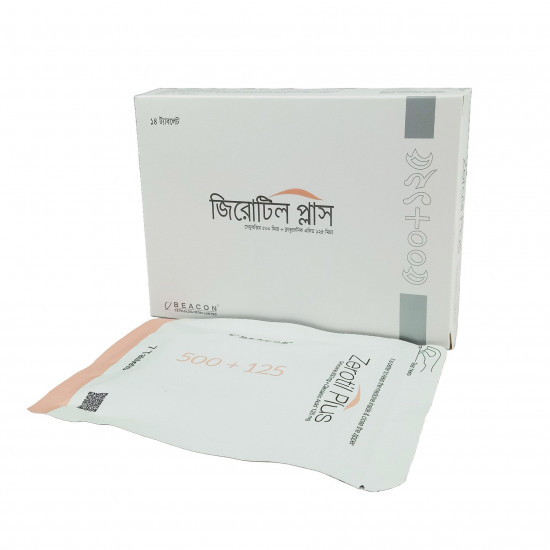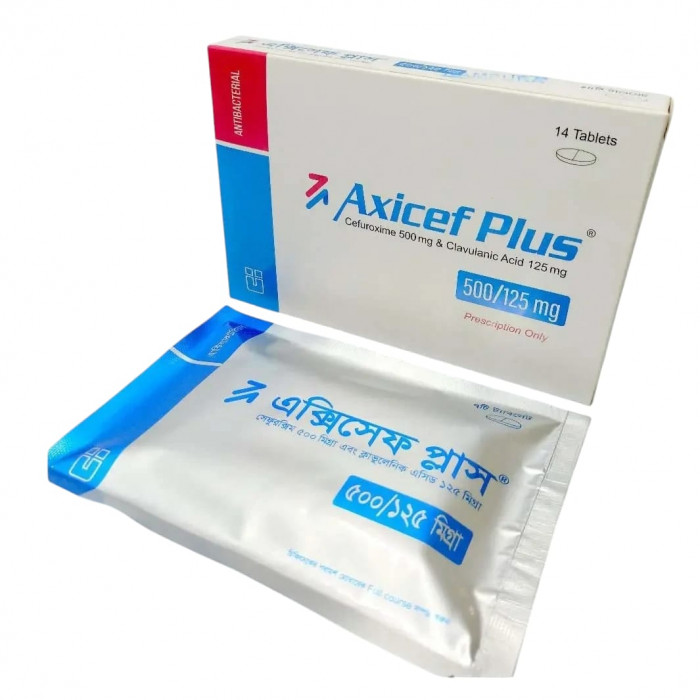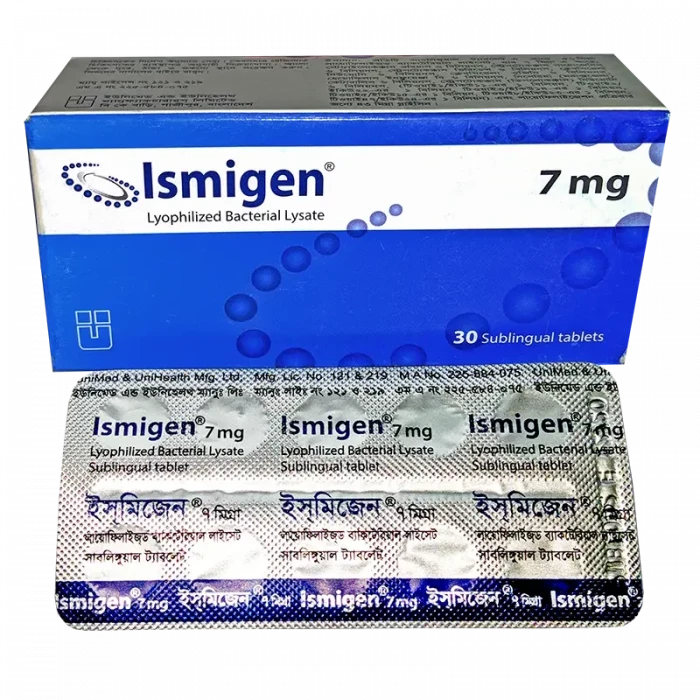
✔ 100% Authentic Product
👁️ Currently Viewing 1133
✅ Description:
Indications
Azithromycin is used to treat infections in the lower respiratory tract, such as bronchitis and pneumonia, as well as infections in the upper respiratory tract, such as sinusitis and pharyngitis/tonsillitis, otitis media, and skin and soft tissue infections. Azithromycin is used to treat non-gonococcal urethritis and cervicitis caused by Chlamydia trachomatis in both men and women with sexually transmitted infections.
Pharmacology
Because azithromycin is acid-stable, it can be given orally without the need for gastric acid protection. It is easily absorbed, and its absorption is enhanced when consumed on an empty stomach. For oral dose formulations, the time to peak concentration in humans is 2.1 to 3.2 hours. Azithromycin is actively delivered to the site of infection due to its high concentration in phagocytes. Large amounts of azithromycin are released during vigorous phagocytosis. Azithromycin concentrations in tissues can be up to 50 times greater than in plasma. This is because of ion trapping and the high solubility of lipids.
Because of azithromycin's long half-life, a large single dose can be given and bacteriostatic levels in infected tissue can be maintained for several days. Plasma concentrations of azithromycin decreased in a polyphasic fashion after a single 500 mg dose, with a mean apparent plasma clearance of 630 mL/min and a terminal elimination half life of 68 hours. The extended terminal half-life is attributed to the drug's substantial absorption and subsequent release from tissues. A main route of elimination for azithromycin is biliary excretion, which is mostly unaltered. Approximately 6% of the prescribed dose shows in urine as unmodified medication over the course of a week.
Microbiology: Azithromycin inhibits the production of microbial proteins by binding to the 50S ribosomal subunit of susceptible microorganisms. The production of nucleic acids is unaffected. In vitro and in clinical infections, azithromycin has been proven to be effective against the majority of isolates of the following microorganisms:
Staphylococcus aureus, Streptococcus agalactiae, Streptococcus pneumoniae, and Streptococcus pyogenes are gram-positive bacteria that are aerobic and facultative.
Haemophilus ducreyi, Haemophilus influenzae, Moraxella catarrhalis, and Neisseria gonorrhoeae are examples of aerobic and facultative gram-negative bacteria.
Chlamydia pneumoniae, Chlamydia trachomatis, Mycoplasma pneumoniae, and Betalactamase production should not affect azithromycin activity.
Streptococci (Groups C, F, G), Viridans group streptococci are examples of aerobic and facultative gram-positive bacteria.
Bordetella pertussis and Legionella pneumophila are gram-negative bacteria that are both aerobic and facultative.
Peptostreptococcus species and Prevotella bivia are examples of anaerobic microbes.
Dosage
Oral-
Adult:
500 mg once daily orally for 3 days or 500 mg once on day 1, then 250 mg once on days 2-5 for 4 days.
For sexually transmitted diseases caused by Chlamydia trachomatis in adults, the dose is 1 gm given as a single dose or 500 mg once on day 1, followed by 250 mg once daily for next 2 days may also be given.
Children:
10 mg/kg body weight once daily for 3 days for child over 6 months
200 mg (1 teaspoonful) for 3 days if body weight is 15-25 kg
300 mg (1½ teaspoonfuls) for 3 days if body weight is 26-35 kg; 400 mg (2 teaspoonfuls) for 3 days if body weight is 36-45 kg.
In typhoid fever, 500 mg (2½ teaspoonfuls) once daily for 7-10 days is given.
Azithromycin Injection (For IV Infusion only): The recommended dose of Azithromycin for injection for the treatment of adult patients with community-acquired pneumonia due to the indicated organisms is:
500 mg as a single daily dose by the intravenous route for at least two days. Intravenous therapy should be followed by Azithromycin by the oral route at a single, daily dose of 500 mg, administered as two 250-mg tablets to complete a 7 to 10-day course of therapy. The timing of the switch to oral therapy should be done at the discretion of the physician and in accordance with clinical response.
The recommended dose of Azithromycin for the treatment of adult patients with pelvic inflammatory disease due to the indicated organisms is: 500 mg as a single daily dose by the intravenous route for one or two days. Intravenous therapy should be followed by Azithromycin by the oral route at a single, daily dose of 250 mg to complete a 7-day course of therapy. The timing of the switch to oral therapy should be done at the discretion of the physician and in accordance with clinical response. If anaerobic microorganisms are suspected of contributing to the infection, an antimicrobial agent with anaerobic activity should be administered in combination with Azithromycin.
Safety and effectiveness of azithromycin for injection in children or adolescents under 16 years have not been established.
Administration
Reconstitution procedure of suspension-
Step 01: Shake the bottle well to loosen the powder.
Step 02: Add boiled and cooled water up to the water mark of the bottle label.
Step 03: Shake until powder is completely mixed with water.
Azithromycin should be taken at least 1 hour before or 2 hours after meal.
Interaction
In the presence of food or an antacid, azithromycin absorption is reduced. Because of the risk of ergotism from Azithromycin's interaction with the cytochrome P-450 system, it should be avoided in patients receiving ergot alkaloids. Because macrolides raise digoxin and cyclosporin plasma concentrations, caution should be used while taking them together. Azithromycin has not been found to interact with Warfarin, Theophylline, Carbamazepine, Methylprednisolone, or Cimetidine.
Contraindications
Patients who are hypersensitive to azithromycin or any other macrolide antibiotic should avoid taking it. Ergot derivatives and azithromycin should not be taken together. Patients with hepatic disorders should avoid azithromycin.
Side Effects
Azithromycin is a well-tolerated antibiotic with little adverse effects. Nausea, vomiting, abdominal discomfort (pain/cramps), flatulence, diarrhoea, headache, dizziness, and skin rashes are among the side effects, which are reversible as medication is stopped.
Pregnancy & Lactation
Azithromycin falls into the B pregnancy category. Azithromycin has been shown in animal reproductive tests to cause no harm to the fetus. In pregnant women, there are no sufficient and well-controlled trials. Because animal reproduction studies do not always reflect human response, Azithromycin should only be administered during pregnancy if there are no other options. Azithromycin is not known to be secreted in breast milk. As a result, when Azithromycin is given to a nursing woman, vigilance should be observed.
Precautions & Warnings
Observation for signs of superinfection with non-susceptible organisms, especially fungus, is suggested with any antibiotic. In patients with renal impairment, there is no need to alter the dose.
Storage Conditions
Keep away from light and heat in a dry location. Keep out of children's reach.
⚠️Disclaimer:
At ePharma, we’re committed to providing accurate and accessible health information. However, all content is intended for informational purposes only and should not replace medical advice from a qualified physician. Please consult your healthcare provider for personalized guidance. We aim to support, not substitute, the doctor-patient relationship.




